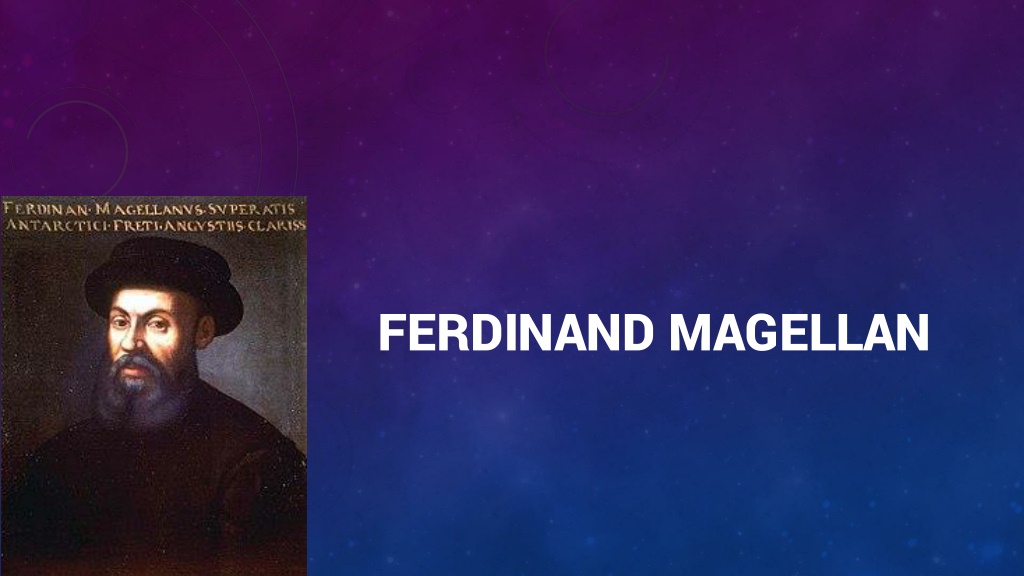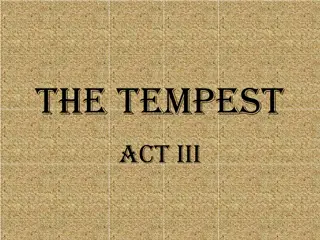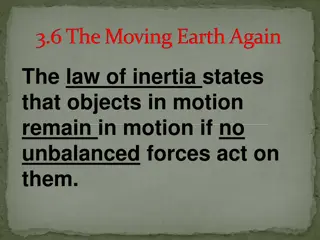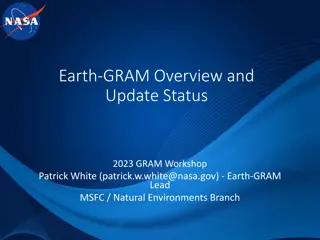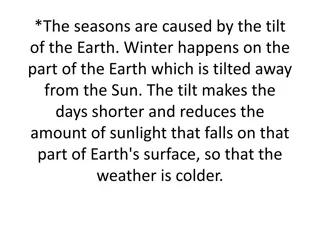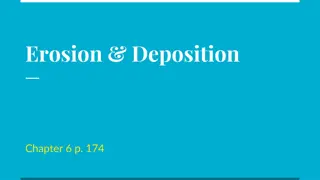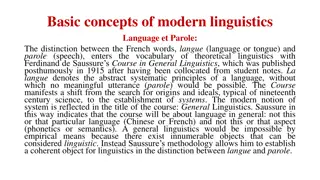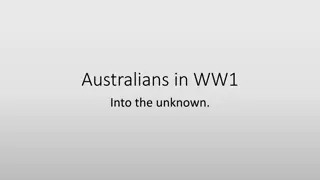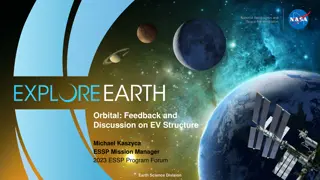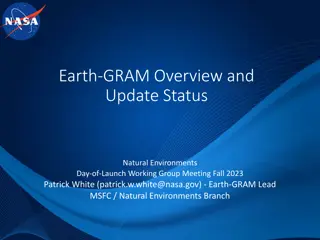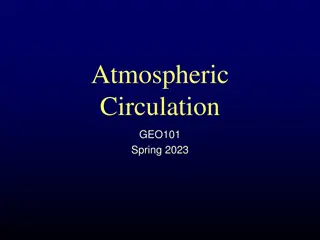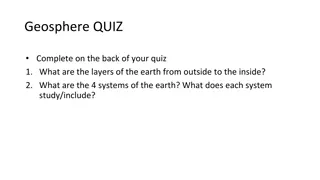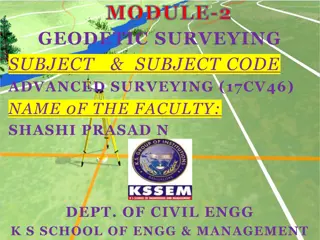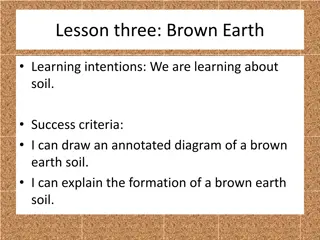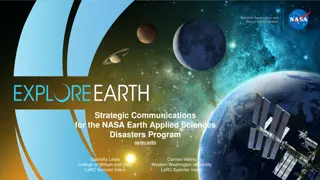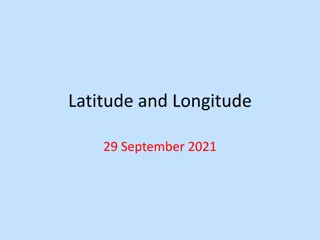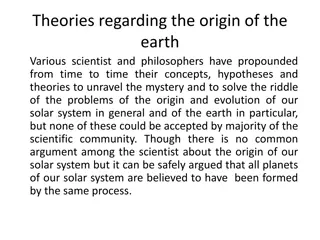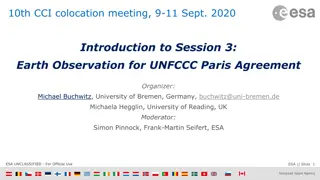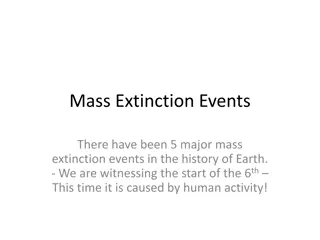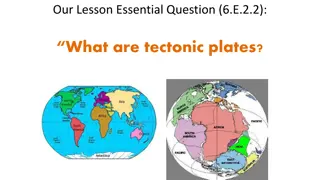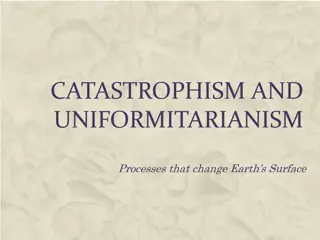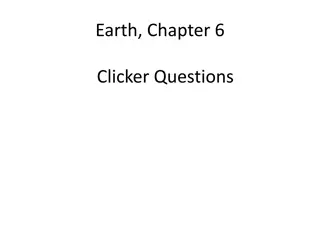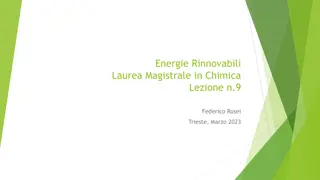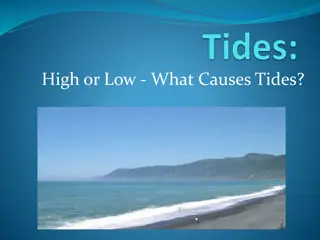Incredible Journey of Ferdinand Magellan: First Circumnavigation of the Earth
Ferdinand Magellan, a Portuguese explorer, led the Spanish expedition to the East Indies from 1519 to 1522, resulting in the first circumnavigation of the Earth completed by Juan Sebastián Elcano. Despite facing storms, mutinies, and challenges, Magellan's expedition reached the Spice Islands in 1521, marking a historic voyage. Tragically, Magellan was killed during the Battle of Mactan in the Philippines. His legacy includes his navigational skills, the naming of the Magellanic penguin, and other celestial objects in his honor.
Download Presentation

Please find below an Image/Link to download the presentation.
The content on the website is provided AS IS for your information and personal use only. It may not be sold, licensed, or shared on other websites without obtaining consent from the author. Download presentation by click this link. If you encounter any issues during the download, it is possible that the publisher has removed the file from their server.
E N D
Presentation Transcript
BACKGROUND Ferdinand Magellan was a Portuguese explorer who organised the Spanish expedition to the East Indies from 1519 to 1522, resulting in the first circumnavigation of the Earth, completed by Juan Sebasti n Elcano. Born into a Portuguese noble family in around 1480, Magellan became a skilled sailor and naval officer and was eventually selected by King Charles I of Spain to search for a westward route to the Maluku Islands (the "Spice Islands )
THE EXPEDITION (SHORTENED) Commanding a fleet of five vessels, he headed south through the Atlantic Ocean to Patagonia, passing through the Strait of Magellan into a body of water he named the "peaceful sea" (the modern Pacific Ocean). Despite a series of storms and mutinies, the expedition reached the Spice Islands in 1521 and returned home via the Indian Ocean to complete the first circuit of the globe. Magellan did not complete the entire voyage, as he was killed during the Battle of Mactan in the Philippines in 1521. His gift, the Santo Ni o de Ceb image, remains one of his legacies during his arrival.
Magellan had already reached the Malay Archipelago in Southeast Asia on previous voyages traveling east (from 1505 to 1511 1512). By visiting this area again but now travelling west, Magellan achieved a nearly complete personal circumnavigation of the globe for the first time in history. The Magellanic penguin is named after him, as he was the first European to note it.Magellan's navigational skills have also been acknowledged in the naming of objects associated with the stars, including the Magellanic Clouds, now known to be two nearby dwarf galaxies; the twin lunar craters of Magelhaens and Magelhaens A; and the Martian crater of Magelhaens.
EXPEDITIONS In March 1505 at the age of 25, Magellan enlisted in the fleet of 22 ships sent to host D. Francisco de Almeida as the first viceroy of Portuguese India. Although his name does not appear in the chronicles, it is known that he remained there eight years, in Goa, Cochinand Quilon. He participated in several battles, including the battle of Cannanore in 1506, where he was wounded. In 1509 he fought in the battle of Diu. He later sailed under Diogo Lopes de Sequeira in the first Portuguese embassy to Malacca, with Francisco Serr o, his friend and possibly cousin. In September, after arriving at Malacca, the expedition fell victim to a conspiracy ending in retreat. Magellan had a crucial role, warning Sequeira and saving Francisco Serr o, who had landed.
In 1511, under the new governor Afonso de Albuquerque, Magellan and Serro participated in the conquest of Malacca. After the conquest their ways parted: Magellan was promoted, with a rich plunder and, in the company of a Malay he had indentured and baptized, Enrique of Malacca, he returned to Portugal in 1512. Serr o departed in the first expedition sent to find the "Spice Islands" in the Moluccas, where he remained. He married a woman from Amboina and became a military advisor to the Sultan of Ternate, Bayan Sirrullah. His letters to Magellan would prove decisive, giving information about the spice-producing territories.
After taking a leave without permission, Magellan fell out of favour. Serving in Morocco, he was wounded, resulting in a permanent limp. He was accused of trading illegally with the Moors. The accusations were proved false, but he received no further offers of employment after 15 May 1514. Later on in 1515, he got an employment offer as a crew member on a Portuguese ship, but rejected this. In 1517 after an argument with King Manuel I, who denied his persistent demands to lead an expedition to reach the spice islands from the east (i.e., while sailing westwards, seeking to avoid the need to sail around the tip of Africa), he left for Spain. In Seville he befriended his countryman Diogo Barbosa and soon married the daughter of Diogo's second wife, Mar a Caldera Beatriz Barbosa. They had two children: Rodrigo de Magalh es and Carlos de Magalh es, both of whom died at a young age. His wife died in Seville around 1521.
Meanwhile, Magellan devoted himself to studying the most recent charts, investigating, in partnership with cosmographer Rui Faleiro, a gateway from the Atlantic to the South Pacific and the possibility of the Moluccas being Spanish according to the demarcation of the Treaty of Tordesillas.
EFFIGY OF FERDINAND MAGELLAN IN TTHE MONUMENT OF DISCOVERIES, LISBON, PORTUGAL
VOYAGE OF CIRCUMNAVIGATION - BACKGROUND Christopher Columbus s voyages to the West (1492 1503) had the goal of reaching the Indies and to establish direct commercial relations between Spain and the Asian kingdoms. The Spanish soon realized that the lands of the Americas were not a part of Asia, but a new continent. The 1494 Treaty of Tordesillas reserved for Portugal the eastern routes that went around Africa, and Vasco da Gama and the Portuguese arrived in India in 1498.
Castile (Spain) urgently needed to find a new commercial route to Asia. After the Junta de Toro conference of 1505, the Spanish Crown commissioned expeditions to discover a route to the west. Spanish explorer Vasco N ez de Balboa reached the Pacific Ocean in 1513 after crossing the Isthmus of Panama, and Juan D az de Sol s died in R o de la Plata in 1516 while exploring South America in the service of Spain.
FUNDING AND PREPARARION In October 1517 in Seville, Magellan contacted Juan de Aranda, Factor of the Casa de Contrataci n. Following the arrival of his partner Rui Faleiro, and with the support of Aranda, they presented their project to the Spanish king, Charles I, future Holy Roman Emperor Charles V. Magellan's project, if successful, would realize Columbus' plan of a spice route by sailing west without damaging relations with the Portuguese. The idea was in tune with the times and had already been discussed after Balboa's discovery of the Pacific. On 22 March 1518 the king named Magellan and Faleiro captains so that they could travel in search of the Spice Islands in July. He raised them to the rank of Commander of the Order of Santiago.
THE KING GRANTED THEM: Monopoly of the discovered route for a period of ten years. Their appointment as governors of the lands and islands found, with 5% of the resulting net gains. A fifth of the gains of the travel. The right to levy one thousand ducats on upcoming trips, paying only 5% on the remainder. Granting of an island for each one, apart from the six richest, from which they would receive a fifteenth.
THE FLEET PROVIDED BY KING CHARLES V INCLUDED FIVE SHIPS: The flagship Trinidad (110 tons, crew 55), under Magellan's command San Antonio (120 tons; crew 60) commanded by Juan de Cartagena Concepci n (90 tons, crew 45) commanded by Gaspar de Quesada Santiago (75 tons, crew 32) commanded by Jo o Serr o Victoria (85 tons, crew 43), named after the church of Santa Maria de la Victoria de Triana, where Magellan took an oath of allegiance to Charles V; commanded by Luis Mendoza.
CREW The crew of about 270 included men from several nations, including Portugal, Spain, Italy, Germany, Belgium, Greece, England and France. Spanish authorities were wary of Magellan, so that they almost prevented him from sailing, switching his mostly Portuguese crew to mostly men of Spain. I t included about 40 Portuguese, among them Magellan's brother-in-law Duarte Barbosa, Jo o Serr o, a relative of Francisco Serr o, Est v o Gomes and Magellan's indentured servant Enrique of Malacca. Faleiro, who had planned to accompany the voyage, withdrew prior to boarding.
Juan Sebastin Elcano, a Spanish merchant ship captain settled at Seville, embarked seeking the king's pardon for previous misdeeds. Antonio Pigafetta, a Venetian scholar and traveller, asked to be on the voyage, accepting the title of "supernumerary and a modest salary. He became a strict assistant of Magellan and kept an accurate journal. The only other sailor to report the voyage would be Francisco Albo, who kept a formal logbook. Juan de Cartagena was named Inspector General of the expedition, responsible for its financial and trading operations.
DEPARTURE AND CROSSING OF THE ATLANTIC On 10 August 1519, the five ships under Magellan's command left Seville and descended the Guadalquivir River to reach the Atlantic Ocean at Sanl car de Barrameda, at the mouth of the river. There they remained more than five weeks. Finally they set sail on 20 September 1519 and left Spain.
King Manuel I ordered a Portuguese naval detachment to pursue Magellan, but the explorer evaded them. After stopping at the Canary Islands, Magellan arrived at Cape Verde, where he set course for Cape St. Augustine in Brazil. On 27 November the expedition crossed the equator; on 6 December the crew sighted South America.
On 13 December anchored near present-day Rio de Janeiro. Although in 1500, Pedro Alvares Cabral claimed the eastern most shores of Brazil for Portugal, Portugal did not maintain a permanent settlement there to protect its brazilwood monopoly (the French were able to help themselves to the timber without interference.) Magellan's armada arrived without Portuguese notice. There the crew was resupplied, but bad conditions caused them to delay. Afterwards, they continued to sail south along South America's east coast, looking for the strait that Magellan believed would lead to the Spice Islands. The fleet reached R o de la Plata in early February, 1520.
For overwintering, Magellan established a temporary settlement called Puerto San Julian on March 30, 1520. On Easter (April 1 and 2), a mutiny broke out involving three of the five ship captains. Magellan took quick and decisive action. Luis de Mendoza, the captain of Victoria, was killed by a party sent by Magellan, and the ship was recovered. After Concepci n's anchor cable had been secretly cut by his forces, the ship drifted towards the well-armed Trinidad, and Concepcion's captain de Quesada and his inner circle surrendered. Juan de Cartagena, the head of the mutineers on the San Antonio,subsequently gave up.
Antonio Pigafetta reported that Gaspar Quesada, the captain of Concepcin, and other mutineers were executed, while Juan de Cartagena, the captain of San Antonio, and a priest named Padre Sanchez de la Reina were marooned on the coast. Most of the men, including Juan Sebasti n Elcano, were needed and forgiven.Reportedly those killed were drawn and quartered and impaled on the coast; years later, their bones were found by Sir Francis Drake.
The journey resumed. The help of Duarte Barbosa was crucial in facing the riot in Puerto San Julian; Magellan appointed him as captain of the Victoria. The Santiago was sent down the coast on a scouting expedition and was wrecked in a sudden storm. All of its crew survived and made it safely to shore. Two of them returned overland to inform Magellan of what had happened, and to bring rescue to their comrades. After this experience, Magellan decided to wait for a few weeks more before resuming the voyage with the four remaining ships.
At 52S latitude on 21 October 1520, the fleet reached Cape Virgenes and concluded they had found the passage, because the waters were brine and deep inland. Four ships began a difficult trip through the 373-mile (600 km) long passage that Magellan called the Estrecho (Canal) de Todos los Santos, ("All Saints' Channel"), because the fleet travelled through it on 1 November or All Saints' Day. The strait is now named the Strait of Magellan. He first assigned Concepcion and San Antonio to explore the strait, but the latter, commanded by G mez, deserted and headed back to Spain on 20 November. On 28 November, the three remaining ships entered the South Pacific. Magellan named the waters the Mar Pacifico (Pacific Ocean) because of its apparent stillness. Magellan and his crew were the first Europeans to reach Tierra del Fuego just east of the Pacific side of the strait.
The casualties suffered in the Philippines left the expedition with too few men to sail all three of the remaining ships. As a result, on 2 May they abandoned and burned Concepci n. Reduced to Trinidad and Victoria, the expedition fled westward to Palawan. They left that island on 21 June and were guided to Brunei, Borneo, by Moro pilots, who could navigate the shallow seas. They anchored off the Brunei breakwater for 35 days, where Pigafetta, an Italian from Vicenza, recorded the magnificence of Rajah Siripada's court (gold, two pearls the size of hens' eggs, porcelain from China, eyeglasses from Europe etc.). In addition, Brunei boasted tame elephants and an armament of 62 cannons, more than five times the armament of Magellan's ships. Brunei people were not interested in the Spanish cargo of cloves, but these proved more valuable than gold upon the return to Spain.
The two remaining ships, laden with valuable spices, tried to return to Spain by sailing westwards. However, as they left the Spice Islands, the Trinidad began to take on water. The crew tried to discover and repair the leak, but failed. They concluded that Trinidad would need to spend considerable time being taken apart, but the small Victoria was not large enough to accommodate all the surviving crew. As a result, Victoria with some of the crew sailed west for Spain. Several weeks later, Trinidad departed and tried to return to Spain via the Pacific route. This attempt failed. Trinidad was captured by the Portuguese and was eventually wrecked in a storm while at anchor under Portuguese control.
Elcano and the remaining crew of Magellan's voyage arrived in Spain aboard the Victoria, almost exactly three years after the fleet of five ships had departed. Magellan had not intended to circumnavigate the world, but rather had intended only to find a secure route through which the Spanish ships could navigate to the Spice Islands. After Magellan's death, Elcano decided to push westward, thereby completing the first known voyage around the entire Earth.
CASUALTIES Four crewmen of the original 55 on Trinidad finally returned to Spain in 1522; 51 had died in war or from disease. In total, approximately 232 sailors of assorted nationalities died on the expedition around the world with Magellan.
WORD STORE Mutinies - an open rebellion against the proper authorities, especially by soldiers or sailors against their officers. Circumnavigate -sail or travel all the way around Enlist -enroll or be enrolled in the armed services. Baptism -It is an act of obedience symbolizing the believer's faith in a crucified, buried, and risen Saviour, the believer's death to sin, the burial of the old life, and the resurrection to walk in newness of life in Christ Jesus. It is a testimony to the believer's faith in the final resurrection of the dead. Limp - walk with difficulty, typically because of a damaged or stiff leg or foot Breakwater -a barrier built out into the sea to protect a coast or harbour from the force of waves.
